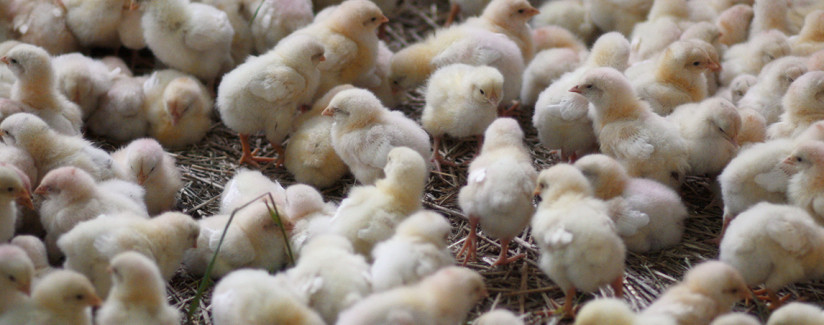
“The well-being of farm animals on larger operations is disregarded in the pursuit of higher profits.”
02/01/2011
The question is often asked by critics of modern animal agriculture but the size of the farm is not a reliable indicator of animal welfare. Research shows good animal husbandry has more to do with the people providing the care.
Small and large farms present different challenges, but both require skilled and conscientious management to promote good animal care. While there are fewer animals on a small operation, time spent caring for the animals must be juggled with various tasks. On larger operations, employees are often trained in specialized skills and a larger staff might allow for more personalized animal care.
The reason farms have gotten larger has more to do with maintaining income levels than increasing profits. One study provides this example: In the 1970s an operation producing 2,000 pigs a year would generate a profit of $42,000. In the 1990s the profit from such a farm would have been about $8,000. Taking inflation into account, the size of the farm would have to be roughly ten times larger in the 1990s to result in a similar income.
True or Not? “The well-being of farm animals on larger operations is disregarded in the pursuit of higher profits.”

Patricia Hester, PhD says:
The question is often asked by critics of modern animal agriculture but the size of the farm is not a reliable indicator of animal welfare. Research shows good animal husbandry has more to do with the people providing care.
Food-producing animals raised in any size operation will bring greater profits if raised humanely using high welfare standards. Whether animals are in a small pastured operation with a herd or flock size of two or housed in a large confined unit with thousands of animals, greater profits are expected using husbandry practices that improve the well-being of animals. Furthermore, research has shown that it is the animal caretaker who plays a major role in the quality of welfare that animals receive. Good stockmanship, whether in a small or large operation, is extremely influential in providing high welfare standards for animals (Dawkins et al., 2004).
Consumers want high welfare standards for food producing animals. Animal agriculture promotes animal well-being by implementing practices that ensure that animals receive appropriate housing or shelters with adequate space and waste removal, health care, feed that meets their nutrient requirements, and a clean supply of water. An example of how industrialized agriculture has provided more space per animal at the risk of lower profits are the United Egg Producer’s animal husbandry guidelines. This welfare certified-program increased the space allowance per caged hen to improve bird welfare even though under some economic conditions, greater profits can be achieved with less space per animal (United Egg Producers, 2008).
References
Dawkins, M. S., C. A. Donnelly, and T. A. Jones. 2004. Chicken welfare is influenced more by housing condition than by stocking density. Nature, 427:342-344.
Pew Commission on Industrial Farm Animal Production. Putting meat on the table: industrial farm animal production in America. 2008. Philadelphia and Baltimore, The Pew Charitable Trusts and Johns Hopkins Bloomberg School of Public Health.

Emily Patterson-Kane, PhD says:
The question is often asked by critics of modern animal agriculture but the size of the farm is not a reliable indicator of animal welfare. Research shows good animal husbandry has more to do with the people providing care.
Most people think of farms as belonging to two distinct types: small, extensive, traditional and family-operated or large, intensive, modern and company-owned. In reality the distinction between small and large farms is not that clear-cut. Farm size represents a continuum from small hobby farms to very large and highly productive units that produce much of the food and fiber sold to consumers.[1]
Small farms continue to outnumber large farms, but in recent decades the average farm has grown in size and the total number of farms has declined.[2],[3] This is because successful farms tend to expand, and keeping more animals per farm generally results in greater profit per farm, although not necessarily more profit per animal.[4],[5] This changing agricultural landscape presents challenges and it is important to protect and advance the welfare of livestock as animal agriculture continues to evolve.
From the Animal’s Point of View
The number of animals on a farm has an indirect impact on the type and level of care provided for each animal. Consequently, the effects of farm size on animal welfare are not clear cut. For example, when it comes to diseases and health conditions that reduce animal welfare, the main risk factors are hygiene, nutrition and type of animal selected. Many diseases and adverse effect of toxins (e.g., dioxin in eggs) have a lower incidence on large farms, potentially due to more effective hygiene and reduced exposures.[6],[7] However, dairy cow lameness is more common in larger herds.[8],[9] Studies that take into account multiple aspects of farm management have not found the number of animals on the farm to be a significant factor.[10],[11] For example a study of whether cows avoid people showed that daily contact and handling was important for reducing fearfulness, but small herd size was not.[12]From the Consumer’s Point of View
Surveys suggest the public does care about whether farm animals experience good welfare. When asked, they usually emphasize the importance of providing animals with adequate space and not putting too many animals in the space provided,[13] but express less concern about the total number of animals on the farm.[14] However, some studies have revealed a consumer preference for small or medium-sized farms over large farms.[15] A 2007 survey found that 57% of people agreed with the statement “farm animals raised on small farms have a better life than those raised on large farms.”[16]From the Farmer’s Point of View
Farm size has not been demonstrated to affect farmers’ ethical beliefs in relation to harmful or unlawful actions.[17] Some studies found that farmers on large farms reported they were more satisfied with the health of their animals,17 or had a more meaningful life[18] and were able to better serve their communities.[19] Other studies, however, identified no relationship between farm size and measures of how well satisfied farmers were with their lifestyles.[20] Larger farms may be able to offer better working conditions for their employees due to higher profitibility.2In Summary
The size of a farm will affect the pressures and obligations put on farmers as they care for their animals. For example a large, extensive farm may place some animals far from the center of farm activities making them more vulnerable to predation and neglect[21],[22] or it may precipitate conflicts between the needs of livestock and those of local wildlife that dwell in unused areas of the farm.[23] On the other hand, being raised on a small farm may mean that animals are subject to particularly long transport times to slaughter,[24] and such farms may have less ability to invest in veterinary care and other up-to-date biosecurity measures that protect their animals from disease.[25] Small and large farms present different challenges, but both require skilled and conscientious management to protect and promote animal welfare.[26] Thus farm size, in and of itself, will never be a reliable sole or primary indicator of the welfare of the animals on the farm.References:
[1]. Wolf CA, Sumner DA. Are farm size distributions bimodal? evidence from kernel density estimates of dairy farm size distributions. Amer J Agri Econ 2001;83:77-88.
[2]. Hurley TM, Kliebenstein J, Orazem PF. The structure of wages and benefits in the U.S. pork industry. Amer J Agr Econ 1999;81:144-163.
[3]. Bewley J, Palmer RW, Jackson-Smith DB. An overview of experiences of Wisconsin dairy farmers who modernized their operations. J Dairy Sci 2001;84:717-719.
[4]. Weersink A, Tauer LW. Causality between dairy farm size and productivity. Am J Agricultural Economics 1991;73:1138-1145.
[5]. Tauer LW, Mishra AK. Can small dairy farms remain competitive in US agriculture? Food Policy 2006;31:458-468.
[6]. Anonymous. Does the farm size influence Ileitis ELISA profile. Ileitis Technical Manual 2006 Boehringer Ongelheim Animal Health GmbHhttp://www.thepigsite.com accessed 3/25/2009
[7]. Kijlstra A, Traag WA, Hoogenboom LAP. Effect of flock size on dioxin levels in eggs from chickens kept outside. Poult Sci 2007;86:2042-2048.
[8]. Hill AE, Green AL, Wagner BA et al. Relationship between herd size and annual prevalence of and primary antimicrobial treatements for common diseases on dairy operations in the United States. Preventative Vet Med 2009;88:264-277.
[9]. Hemsworth PH, Barnet JL, Beveridge L, et al. The welfare of extensively managed dairy cattle: a review. Appl Anim Behav Sci 1995;42:161-182.
[10]. Weber R, Keil NM, Fehr M. Factors affecting piglet mortality in loose farrowing systems on commercial farms. Livestock Sci 2009, in press.
[11]. Moberly RL, White PC, Webbon CC et al. Factors associated with fox (Vulpes vulpes) [redation on lambs in Britain. Wildl Res 2003;30;219-227.
“Crowded” by Dirk Heine is licensed under CC BY-ND 2.0.



























